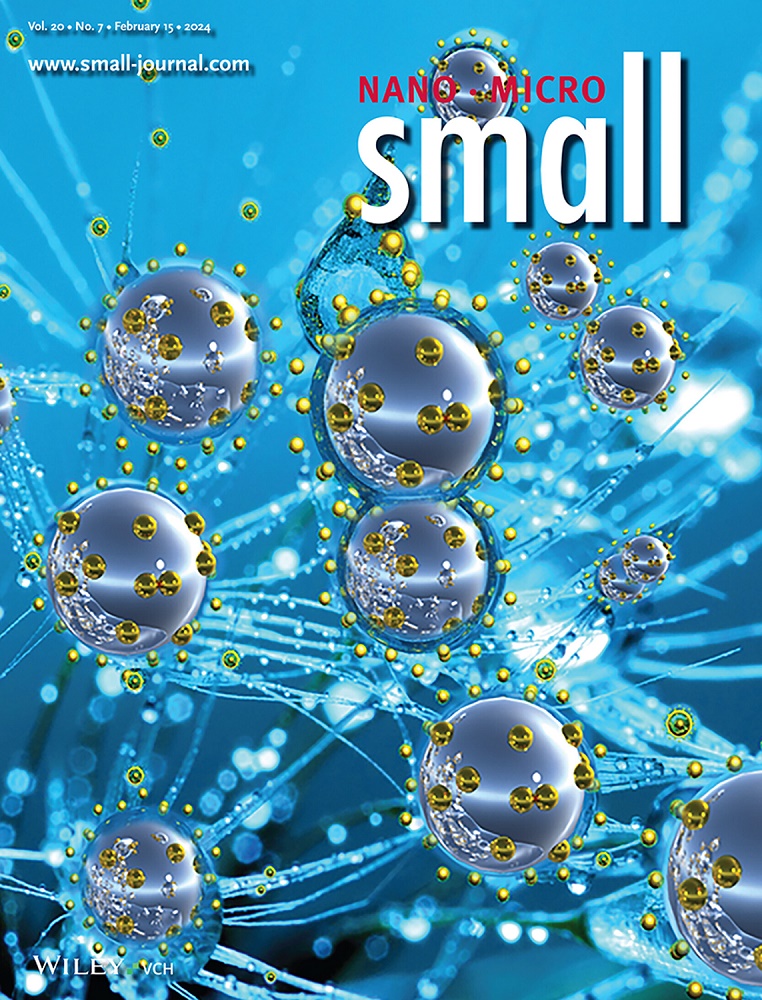纳米碱式醋酸铜在功能改性木材上的原位生长机理(Small 33/2025)
IF 12.1
2区 材料科学
Q1 CHEMISTRY, MULTIDISCIPLINARY
引用次数: 0
摘要
文章编号2500446,刘谦,高伟等首次揭示了Cu2(OH)3(CH3COO)·H2O纳米颗粒在木材上的随时间演化。原位生长的纳米碱式醋酸铜的形貌随木材种类和切割截面的不同而不同。原位改性使木材具有超疏水性、自洁性、防污性、抗紫外线性和抗霉菌性。本文章由计算机程序翻译,如有差异,请以英文原文为准。

Hydrangea and Lotus Inspired In Situ Growth Mechanism of Nano Basic Copper Acetate on Functional Modified Wood (Small 33/2025)
Functional Modified Wood
In article number 2500446, Qian Liu, Wei Gao, and co-workers revealed the time dependent evolution of Cu2(OH)3(CH3COO)·H2O nanoparticles on wood for the first time. The morphology of in situ grown nano basic copper acetate varied according to the wood species and cut sections. In situ modification endowed wood with superhydrophobicity, self-cleaning, antifouling, UV durability, as well as mold resistance.
求助全文
通过发布文献求助,成功后即可免费获取论文全文。
去求助
来源期刊

Small
工程技术-材料科学:综合
CiteScore
17.70
自引率
3.80%
发文量
1830
审稿时长
2.1 months
期刊介绍:
Small serves as an exceptional platform for both experimental and theoretical studies in fundamental and applied interdisciplinary research at the nano- and microscale. The journal offers a compelling mix of peer-reviewed Research Articles, Reviews, Perspectives, and Comments.
With a remarkable 2022 Journal Impact Factor of 13.3 (Journal Citation Reports from Clarivate Analytics, 2023), Small remains among the top multidisciplinary journals, covering a wide range of topics at the interface of materials science, chemistry, physics, engineering, medicine, and biology.
Small's readership includes biochemists, biologists, biomedical scientists, chemists, engineers, information technologists, materials scientists, physicists, and theoreticians alike.
 求助内容:
求助内容: 应助结果提醒方式:
应助结果提醒方式:


